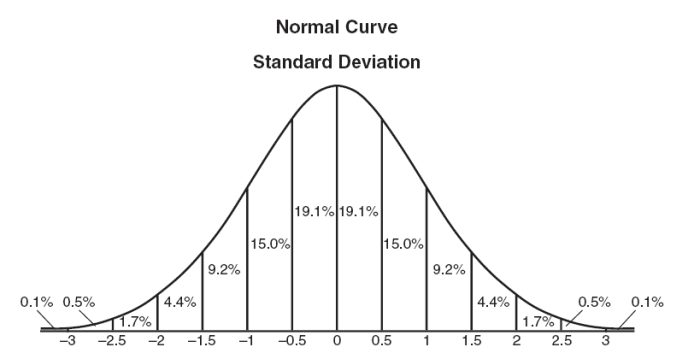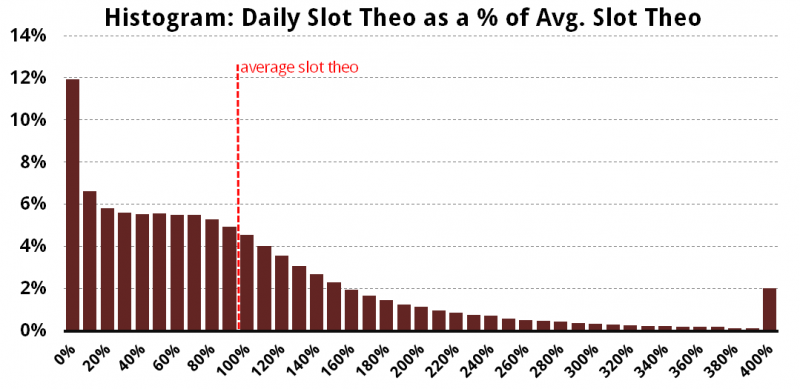It can be a sobering realization — that your promotion or campaign wasn’t as successful as initially projected, in large part because most individual players did not play up to their daily averages (whether the measure is Theo, Actual Win, or Handle). My $250 ADT guys only played to $180, my $500 guys only played to $350, etc.
First of all, the more valuable the promotion, the more likely people will visit just to pick up the giveaway item or the free slot play or whatever it is you’re giving out. Which means a large number of respondents aren’t really there to gamble, or they are just squeezing in a little gambling on a day they normally would be doing something else. So, paradoxically, the better the offer, the more likely it is that most players will not achieve their typical averages.
However, a more influential factor is simply that on most trips, all players fail to reach their personal averages. The reason? The distribution of outcomes is heavily skewed to the low side. What do I mean? Well, let’s think about a player with 5 visits and a $100 ADT. Knowing he is a $100 player, would you expect that an $80 theo day is equally as likely as a $120 day? If you said yes, your mind is probably modeling a normal distribution of daily outcomes — i.e. being 20% above the average is just as likely as being 20% below the average (you can substitute any number for the 20%).

But Theo cannot be distriubted normally. Theo can’t be below zero, but there’s no upper limit. Right there, we’ve violated the normal distribution. Further, think of how slot machines pay off, or how players generally act. Most slot machines are set up to have a lot of small outcomes (more losses than wins, obviously), offset by a small number of large slot jackpots. Players will come to the casino with a bankroll they have to lose, which they often do, again offset by that rare “hot streak” where they triple or 5x or 10x their money.
Let’s return to our $100 ADT player. Considering the distribution scenario just laid out, it’s likely he reached a $100 ADT via days like these: $75, $46, $235, $61, $83. Here, 4 of his 5 trips are below-average. Other than the one big day he had (we’ll assume he was having some really good luck on this day), his average is only $66. Seeing a distribution like this, would you be surprised if he played below $100 on his next visit? Hopefully not.
It’s one thing to invent a hypothetical player that fits nicely into a certain scenario. But this blog likes to focus on facts. So I calculated the averages for regular players (at least once per month) over the past 18 months, then compared individual daily results with the players’ averages. Here’s the distribution of the daily-to-average Theo ratio:

Not too surprisingly, this is anything but a normal distribution. The average value is definitely not the most likely outcome. A day with almost no play is twice as likely as any other outcome, often influenced by the reaoning listed above, that a lot of trips are motivated more by the gift pickup or free slot play than a specific desire to gamble that day (for the record, I eliminated all trips with zero coin-in or theo — if we counted “no play” trips, the left-most bar would be even higher). But moreso, the long tail to the right demonstrates that player averages are influenced by a small number of very large outliers. It also shows that for most players, their “average” daily Theo and “most likely” daily Theo are not the same, actually often pretty far apart. Going back to the original scenario, if you’re expecting your $100 ADT player to reach $100 on half of his visits, you’ll be sorely disappointed.
More in Part 2...

